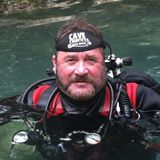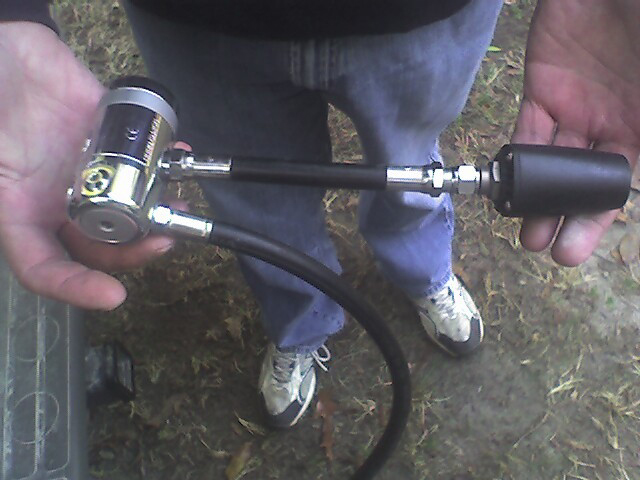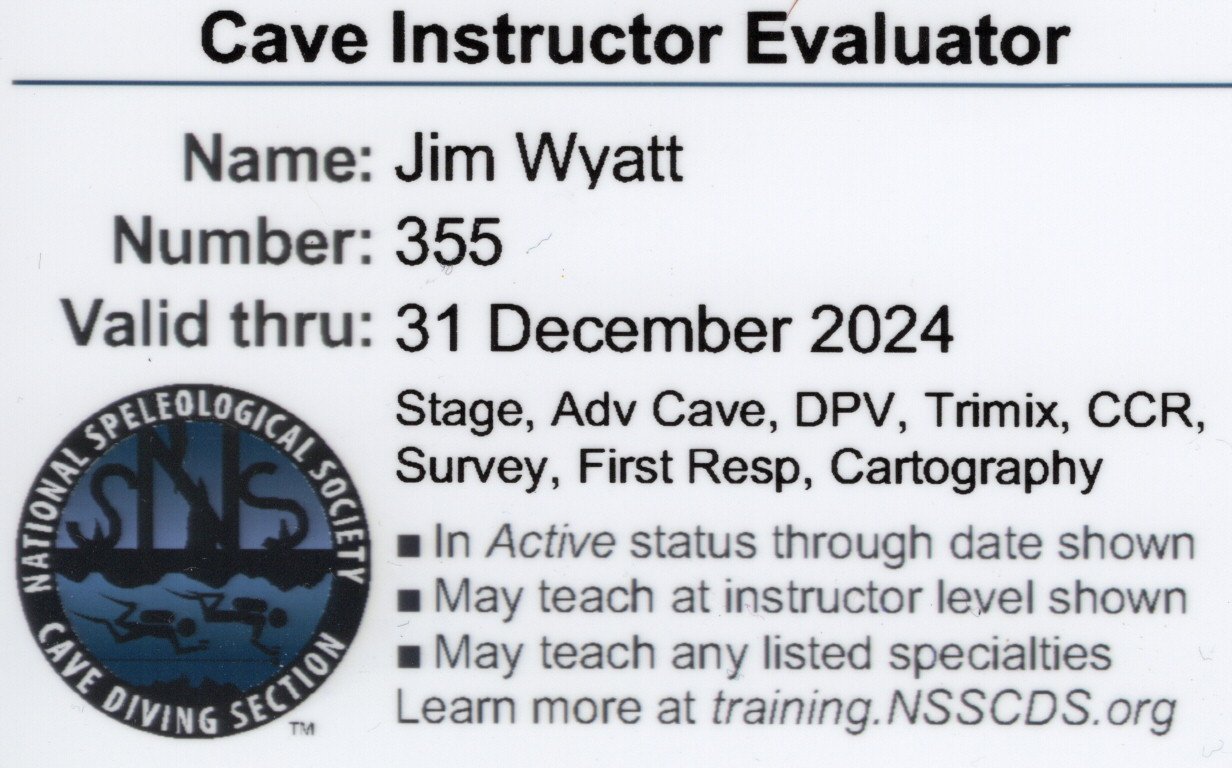




My teaching style is relaxed, but thorough. There will never be a time when I feel that belittling or embarassing you is beneficial for training. There will be after the dive critiques where you will critique your performance and I will assist you in seeing and identifying a way for you to correct any deficiencies we may identify. I strive to conduct a professionally run course of instruction, because that is what you are here for. It is possible to conduct a professional course in a relaxed atmosphere. When you take a cave class, or any scuba class from me I will strive to make the atmosphere relaxed, informal and fun.

My ideas and philosophy on gear configuration is that there are many ways to properly configure a cave or technical diving rig. You and I will look at your current configuration and if it meets standards and is safe you will be able to use it in the courses you take from me. If we see things that can be made better, or better work in the cave environment l will assist you in making those changes. What I will not do is insist that you configure your gear exactly like my gear or anyone elses gear. No dogma here. If you contact me via e-mail or phone I will be glad to discuss with you the overall aspects of proper gear configuration as well as any specific questions you may have regarding gear types and brands. Most local dive shops do not have a clue as to what proper cave gear and/or configuration is.
Some dive gear comes from the manufacturer not properly configured for cave diving. Things that come to mind are the inflator hoses on certain wings. Some of these hoses are very long and have a pull dump attached to the wing itself. What I see are divers attempting to just use the gear as configured by the manufacturer subsequently adjusting the way they dive to the gear they have. What I suggest is that you adjust your gear configuration to the way you should dive, not vice versa.
In the above example the diver should replace the long inflator hose with a shorter inflator hose, then replace the long LP inflator hose with a shorter LP inflator hose, and then replace the pull dump with an elbow. I also see divers with very long SPG hoses that when clipped off forms a loop that extends beyond their body plane. These divers should replace that long SPG hose with a shorter one and get rid of the extended loop.
Please note: Divers are not considered configured correctly if they stuff their long hose and breathe their short hose for a backmount rig. For a sidemount rig we will look at this together.
Awareness is one of the central and key components of a safe cave diver. During training you will be challenged to perform several different things at once, known as task loading. You will be task loaded by the very nature of the training. For instance tracking gas pressure, running reels, carrying a light, controlling buoyancy and trim, keeping up with buddies, and meeting training goals are but a few of the things that will be going on all at once.
With all of these things going on at once, I will also expect you to be aware of your surroundings, your orientation to things such as the line, the exit, your buddy, your gear, and not just simply completing the task at hand. I also hope to develop in you what I term as muscle memory. Muscle memory is developed through repetition and practice. For instance running a reel into a high flow cave, I will expect that you can perform this task and I will ask you to do it many times throughout your training. At some point in the training process I hope that running the reel becomes more second nature than something you have to concentrate the majority of your awareness to accomplish. The same muscle memory will be developed for buoyancy, swim attitude (trim), installing jumps and gaps, and performing complex navigation at the full cave level, and more. If after course completion you have to struggle with buoyancy, body positioning, breathing patterns or your emotions you are not adequately prepared to cave dive.
Complacency is the cave divers' enemy. We will discuss complacency, identify some of the things that cave divers can become complacent about and help you develop the attitude that will prevent you from being complacent. We will work on developing a routine, or almost a ritual of things I feel you should do in preparation for a cave dive. Sometimes I see cave divers walking to the dive site fully suited up still trying to get their gear squared away, such as stowing the long hose, or adjusting gear. What I will try to instill in you is the habit, and routine of being 100% ready both gear wise as well as mentally before you enter the water.
Dive planning is a very important aspect of a successful cave dive. We will plan the dives down to the last detail. Who is doing what, when and how. A cave dive can have lots of transitions where the team changes the pace and changes the acitivity during the dive. Transitions are very important and historically I find that during these transitions (i.e. installing a jump line, installing a primary reel) are where team members get out of "synch" with one another. We will better learn how to manage these transitions through proper prior planning and increasing awareness.
At the apprentice cave level I expect that you will start developing awareness and muscle memory. My job is to help guide you in knowing how to perform tasks and then to perform them repetitively so you start developing your muscle memory, and your awareness. The apprentice course develops the foundation for all of your future cave diving. We will strive to make it a rock hard foundation of skills, attitude, awareness and basic ideals of gear configuration for the cave environment.
As you progress from apprentice thru full cave we add more tasks, create more muscle memory and help you to fine tune skills and stay on track with your awareness.
If you have questions about this approach to learning or coursework questions feel free to call me.


